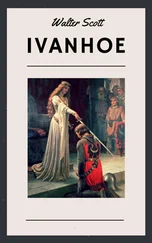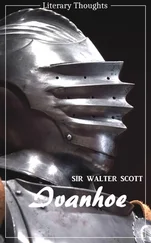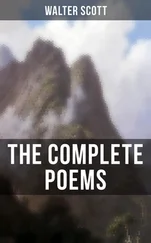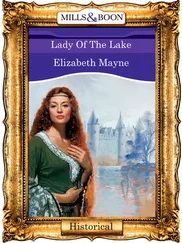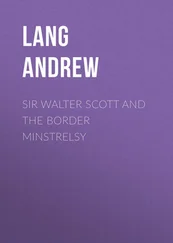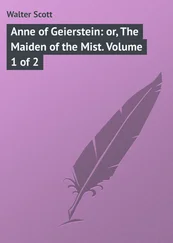Walter Scott - Lady of the Lake
Здесь есть возможность читать онлайн «Walter Scott - Lady of the Lake» весь текст электронной книги совершенно бесплатно (целиком полную версию без сокращений). В некоторых случаях можно слушать аудио, скачать через торрент в формате fb2 и присутствует краткое содержание. Жанр: Поэзия, на английском языке. Описание произведения, (предисловие) а так же отзывы посетителей доступны на портале библиотеки ЛибКат.
- Название:Lady of the Lake
- Автор:
- Жанр:
- Год:неизвестен
- ISBN:нет данных
- Рейтинг книги:4 / 5. Голосов: 1
-
Избранное:Добавить в избранное
- Отзывы:
-
Ваша оценка:
- 80
- 1
- 2
- 3
- 4
- 5
Lady of the Lake: краткое содержание, описание и аннотация
Предлагаем к чтению аннотацию, описание, краткое содержание или предисловие (зависит от того, что написал сам автор книги «Lady of the Lake»). Если вы не нашли необходимую информацию о книге — напишите в комментариях, мы постараемся отыскать её.
Lady of the Lake — читать онлайн бесплатно полную книгу (весь текст) целиком
Ниже представлен текст книги, разбитый по страницам. Система сохранения места последней прочитанной страницы, позволяет с удобством читать онлайн бесплатно книгу «Lady of the Lake», без необходимости каждый раз заново искать на чём Вы остановились. Поставьте закладку, и сможете в любой момент перейти на страницу, на которой закончили чтение.
Интервал:
Закладка:
Note the use of the supernatural (p. 239). Does it seem impressive?
Is the conclusion sustained and dramatic?
Description
Are the nature descriptions given for scenic effect, or do they serve as a background and setting for the story?
Does Scott employ incidents of plot for the sake of dragging in descriptions?
Which is the best in the poem: nature description, plot construction, character, description, or the portrayal of old life and customs?
Is the descriptive language suggestive?
Are the landscape scenes given minutely, or are they drawn broadly, with a free hand?
Does Scott keep closely to the geography of the region of his tale (see map, p. 6, and note 461, p. 259)?
Perry Pictures 912–17 (from Landseer's paintings of deer) and 1511 (Ben Lomond) may be used in illustration of The Lady of the Lake .
Characters
Are the characters distinctly drawn—do they seem real people of flesh and blood?
How is Ellen's character displayed?
Do you feel any sympathy for Roderick Dhu? Does your impression of his character improve (pp. 96, 98, 99, 182, 188, 195, and 241)?
Was Douglas an historical character?
Is the character of James Fitz-James true to James V of Scotland?
Is Allan-bane representative of the place in the ancient Scottish clan which the minstrel had?
THEME SUBJECTS
1. Scott's boyhood (with emphasis on the cultivation of characteristics displayed in his poems; pp. 10–12).
2. Scott as a landed proprietor (pp. 27–33). This may well take the form of an imaginary visit to Abbotsford.
3. Scott in business (pp. 23–25, 34–36). Compare his struggle against debt with Mark Twain's.
4. The historical setting of The Lady of the Lake (pp. 46–48).
5. A visit to the scene of The Lady of the Lake .
6. Summary of the action; as a whole, or by parts (cantos or other logical divisions).
7. Character sketches of Fitz-James, Roderick Dhu, Ellen, Malcolm, Douglas.
8. Highland customs reflected in the poem (pp. 129 ff., 253, 254, etc.).
9. The use of the Minstrel in the poem.
10. The interpolated lyrics—what purposes do they, respectively, serve?
11. Descriptions of scenes resembling, in one way or another, attractive scenes depicted in The Lady of the Lake .
12. Soldier life in Stirling Castle (pp. 219 ff.).
13. Contrast feudal warfare (especially as shown on pp. 81, 182) with modern warfare.
14. Show, by selected passages, Scott's veneration for the ideals of feudalism (pp. 81, 228, etc.).
15. Rewrite the scene of the combat between Roderick and Fitz-James (pp. 198–200) in the prose style of Scott as in the tournament scene in Ivanhoe .
SELECTIONS FOR CLASS READING
1. The chase (pp. 60–65).
2. The Trossachs (pp. 66–68).
3. Ellen (pp. 72–74).
4. Ellen's song (pp. 83–85).
5. Roderick's arrival (pp. 100–105).
6. Roderick's proposal (pp. 113–118).
7. The consecration of the bloody cross (pp. 128–132).
8. The summoning of the clan (pp. 132–135).
9. The Coronach (pp. 136, 137).
10. Roderick overhears Ellen's song (pp. 148–149).
11. The ballad of Alice Brand (pp. 162–167).
12. Fitz-James and the mad woman (pp. 172–178).
13. The hospitality of a Highlander (pp. 180–183).
14. The hidden army (pp. 191–192).
15. The combat (pp. 195–200).
16. Douglas at the games (pp. 207–211).
17. The speech of Douglas (pp. 212, 213).
18. The Battle of Beal' an Duine (pp. 232–240).
19. Fitz-James reveals himself to Ellen (pp. 244–249).
CLASSES OF POETRY
It is important for the student of poetry to know the principal classes into which poems are divided. The following brief explanations do not pretend to be exhaustive, but they should be of practical aid. It must be remembered that a long poem is sometimes not very definitely of any one class, but combines characteristics of different classes.
Narrative poetry, like narrative prose, aims primarily to tell a story.
The epic is the most pretentious kind of narrative poetry; it tells in serious verse of the great deeds of a popular hero. The Iliad , the Aeneid , Beowulf , Paradise Lost are important epics. The Idylls of the King is in the main an epic poem.
The metrical romance is a rather long story in verse, of a less exalted and heroic character than the true epic. Scott's Lady of the Lake is a familiar example.
The verse tale is shorter and likely to be less dignified and serious than the metrical romance. The stories in Chaucer's Canterbury Tales , or Burns's Tam O'Shanter , may serve as examples.
The ballad is a narrative poem, usually rather short and in such form as to be sung. It is distinguished from a song by the fact that it tells a story. Popular or folk ballads are ancient and of unknown authorship—handed down by word of mouth and varied by the transmitters. Artistic ballads are imitations, by known poets, of traditional ballads.
Descriptive and reflective poems have characteristics sufficiently indicated by the adjectives in italics.
The pastoral is a particular kind of descriptive and narrative poem in which the scene is laid in the country.
The idyll is, according to the etymology of its name, a "little picture." Tennyson's Idylls of the King are rather more epic than idyllic in the strict sense of the term. The terms idyll and pastoral are not definitely discriminated.
Lyric poetry is poetry expressing personal feeling or emotion and in tuneful form. Songs are the simplest examples of lyric poetry; formal odes , such as Wordsworth's on "Immortality," the most elaborate. A lyric does not primarily tell a story, but it may imply one or refer to one.
The elegy is a reflective lyric prompted by the death of some one. Tennyson's In Memoriam is a collection of elegiac lyrics.
A hymn is a religious lyric.
Dramatic poetry presents human life in speech and action.
A tragedy is a serious drama which presents its hero in a losing struggle ending in his death.
A comedy does not end in death, and is usually cheerful and humorous.
The dramatic monologue is a poem in which a dramatic situation is presented, or perhaps a story is told, by one speaker.
Satire in verse aims to correct abuses, to ridicule persons, etc.
Didactic poetry has the purpose of teaching.
Transcriber's Note:
The following errors have been corrected in this text:
Page 41: added period after "Southey in 1774"
Page 89: put blank line between lines 18 and 19 of Canto Second
Page 98: moved line number 255 of Canto Second to correct position (in the original the line number was at line 254)
Page 165: changed "by their monarch's si" to "... side"
Page 196: changed "by" to "my" in "When foeman bade me draw my blade;"
Page 212: changed "shreik" to "shriek" in "the women shriek;"
Page 253: changed comma to period after "a harp unseen"
Page 256: changed "364" to "363" in note on line 343 of Canto Second
Page 258: changed "364" to "363" in note on line 116 of Canto Third
Page 260: added period after "150" in note on line 150 of Canto Fourth
Page 262: added period after "from the calendar"
Page 262: changed "Robinhood" to "Robin Hood" in "Bold Robin Hood and all his band."
Page 268: changed "p. 5" to "p. 6" in question "Does Scott keep ..."
Читать дальшеИнтервал:
Закладка:
Похожие книги на «Lady of the Lake»
Представляем Вашему вниманию похожие книги на «Lady of the Lake» списком для выбора. Мы отобрали схожую по названию и смыслу литературу в надежде предоставить читателям больше вариантов отыскать новые, интересные, ещё непрочитанные произведения.
Обсуждение, отзывы о книге «Lady of the Lake» и просто собственные мнения читателей. Оставьте ваши комментарии, напишите, что Вы думаете о произведении, его смысле или главных героях. Укажите что конкретно понравилось, а что нет, и почему Вы так считаете.


